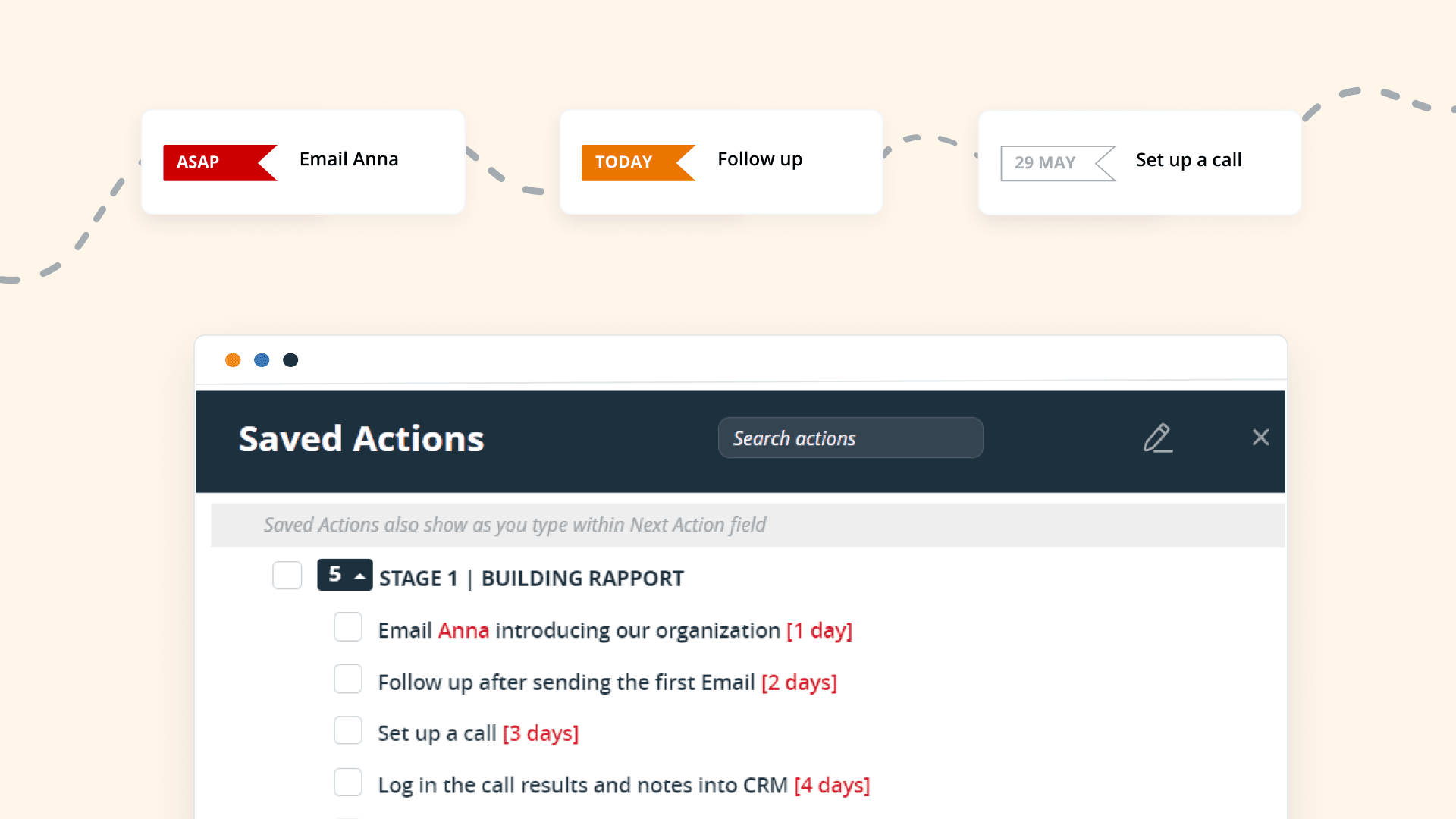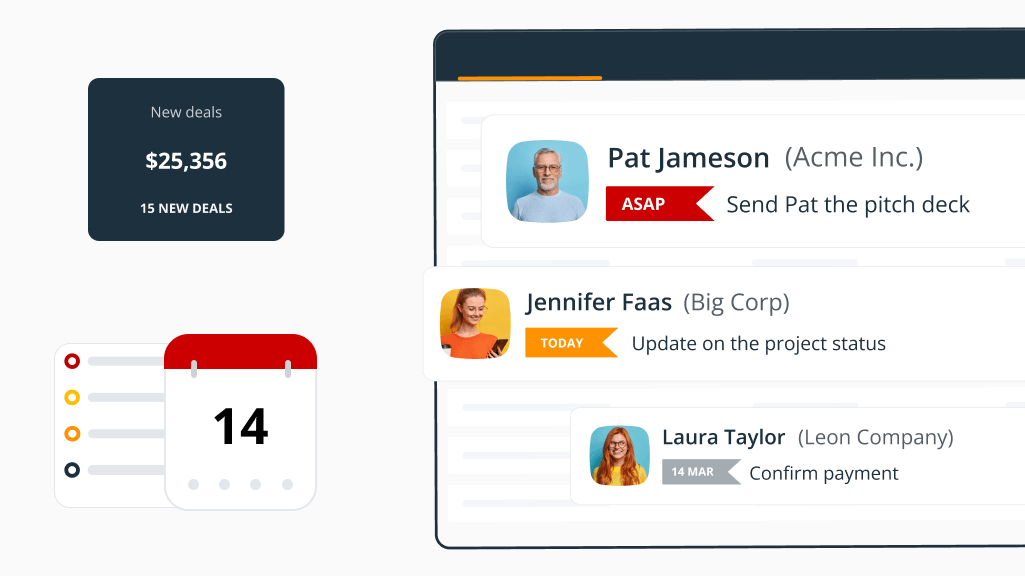

Next Best Actions in sales: 5 steps for better decisions in selling

Making smart moves at just the right moment can make a big difference in business.
That’s what the Next-Best-Action (NBA) decision-making framework is all about.
While this concept has been mostly used in the marketing world, it’s useful in sales too.
Next Best Actions can act as a sales process helping you easily move opportunities from one stage to another.
In this blog post, we’ll show how to use Next Best Actions in sales (and why this framework might be just the one thing that your business needs right now).
What are Next Best Actions in sales?
Simply adding prospects and customers to your CRM is no longer enough.
Without a clear plan of action, these contacts can easily turn into missed, or rather forgotten, opportunities.
The Next Best Action (NBA) decision-making framework is a proactive approach to selling. It doesn’t give you a rigid template to follow but encourages you to consistently think one step ahead.
In this case, every CRM contact has a defined next action next to them.
Instead of waiting for prospects to reach out, salespeople who use NBAs decide on their next move on the spot, as soon as their previous action is completed.
For example, once they finish the first call with a prospect, they set a new NBA straight away. This creates a continuous loop of Next Best Actions.
That’s why the Next Best Action framework is sometimes referred to as upfront decision-making.
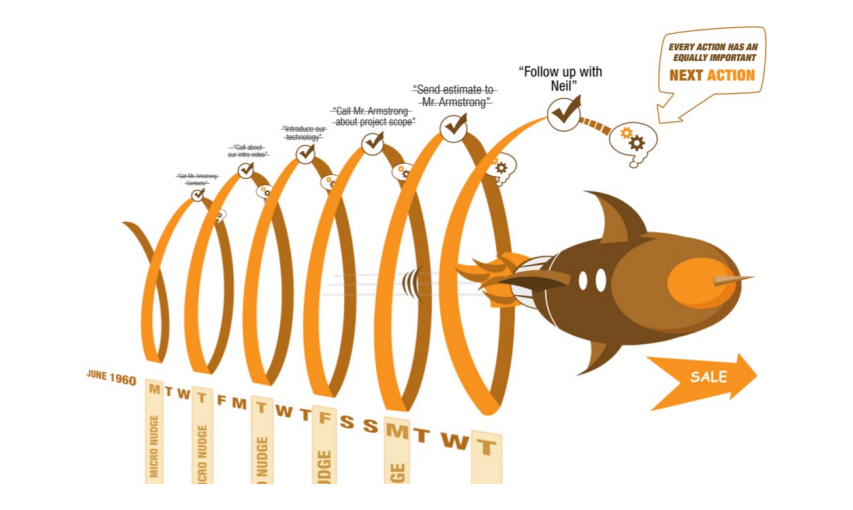
Why are Next Best Actions important in sales?
While there are a lot of articles written about the Next Best Actions in marketing, sales teams can benefit from this decision framework too.
NBAs change the way salespeople approach their day-to-day tasks.
For example, what do salespeople do after an initial discovery call with a lead?
Many of them simply log the interaction in their CRM—and then move on to the next sales call, and so on.
While there’s nothing inherently wrong with this approach, it can lead to missed opportunities. There are so many calls to make each day that sometimes you can forget to get back to someone.
But not if you have an NBA added next to a contact.
In other words, Next Best Actions encourage you to follow up.
If catching up is about picking up something in a hurry, following up is done more deliberately. NBAs shift your mindset from catching up to following up.
Instead of simply logging call results, sending an email, and waiting for the lead to respond, the NBA approach prompts you to set your next action right away so that the lead doesn’t disappear from your radar.
But NBAs are not exclusive to prospecting or lead qualification. They are also vital for post-sale activities.
For example, if your long-term customer has gone quiet, an NBA reminds you to re-engage with them by, say, sending a check-in email.
The Next Best Actions in sales create an uninterrupted flow of actions, similar to the Getting Things Done framework popularized by David Allen.
Examples of Next Best Actions
The Next Best Action framework can be applied to any customer-facing function.
It ensures that every interaction moves the business relationship forward.
Here are some practical examples of how to implement NBAs for different use cases.
Next-Best-Actions use cases in sales
NBAs can improve the way you’re nurturing leads.
Instead of following the usual sequence of:
cold call → leave a voice mail → follow up with an email,
you can incorporate more personal next actions into your sales process.
For example, instead of sending a generic follow-up email to your lead, share a case study with the ROI of your solution. Make sure that the case study aligns with the lead’s pain points or interests.
It’s possible to achieve better results with NBAs because your next actions form a standardized sales process. They are your baseline that you can fall back on.
Since you don’t need to think about the baseline, you free up your mind and be a bit more creative.
Next-Best-Actions use cases in business development
If you have an upcoming webinar that your partners might be interested in, just add an NBA to the relevant CRM contact, even if the webinar is several months away.
You’ll receive a reminder when it’s time to send a personal invitation to this partner.
NBAs help you make better ad-hoc decisions.
For example, if you had a call with a potential partner and they told you they’d be willing to do some co-marketing activities in a few months, add an NBA next to them as a reminder.
When the time comes, you’ll get in touch with them about a joint marketing opportunity.
NBAs can also help you get referrals.
For example, once you establish a relationship with a new partner, it might be too soon to ask for introductions straight away. So add an NBA scheduled for a date in a few months—and then reach out.
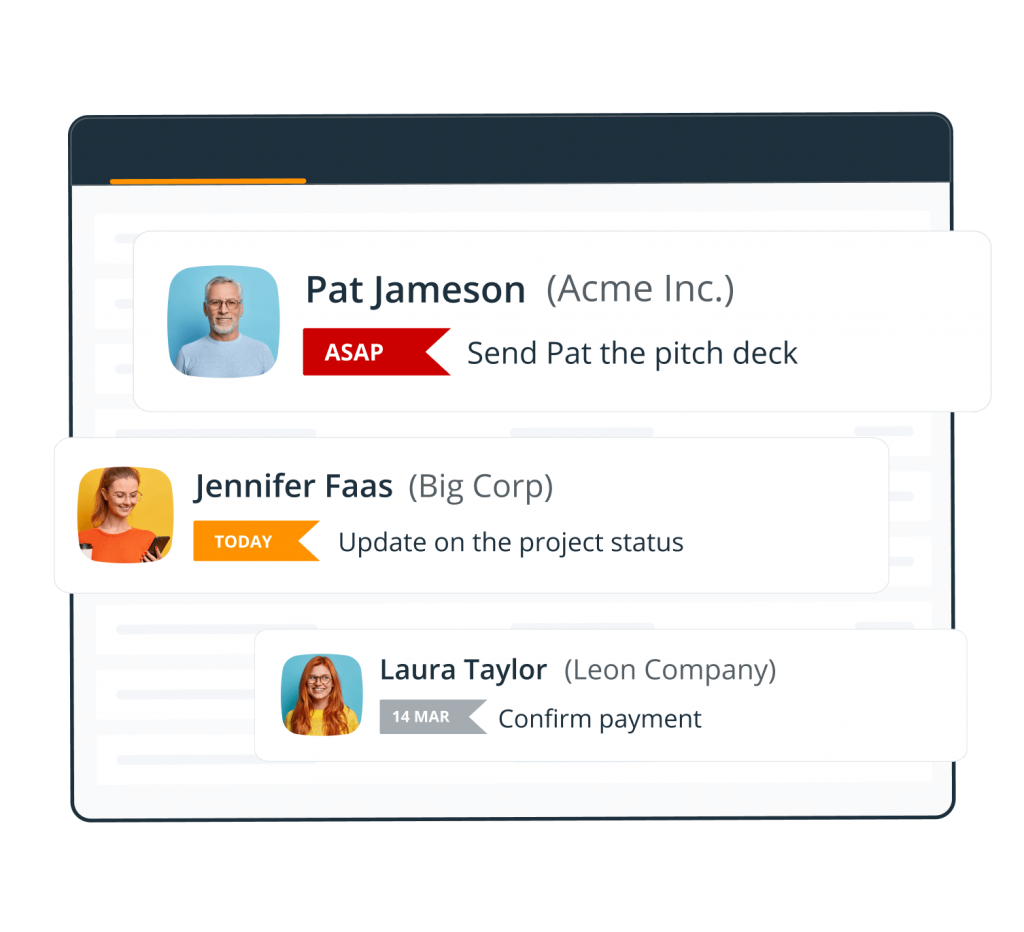
Next-Best-Actions use cases in customer service
NBAs allow you not only to create actions but also assign them to other team members.
For example, if a customer’s issue is too technical or outside of your expertise, assign it to a team member who’s better equipped to handle it.

But this is not it.
After you close a support ticket, add an NBA for yourself to get in touch with the customer in a few days or weeks and check in on how the proposed solution is working for them.
By executing your NBAs, you’ll show your customers that you didn’t forget about them after the contract had been signed.
This is why Next Best Actions are great not only for marketing.
While customer service is not necessarily something associated with sales directly, customer service agents are selling to some extent too.
For example, if your customers are satisfied with the level of support you provide, you’ll have an easier time cross-selling or upselling.
So don’t overestimate the importance of NBAs for customer service too!
Benefits of using Next Best Actions in sales
The Next Best Action approach to sales has many benefits.
Here are some key advantages of embracing the Next Best Action framework:
Streamline your sales process
One of the biggest mistakes small businesses make is having no sales process.
NBAs provide clear direction and prioritization.
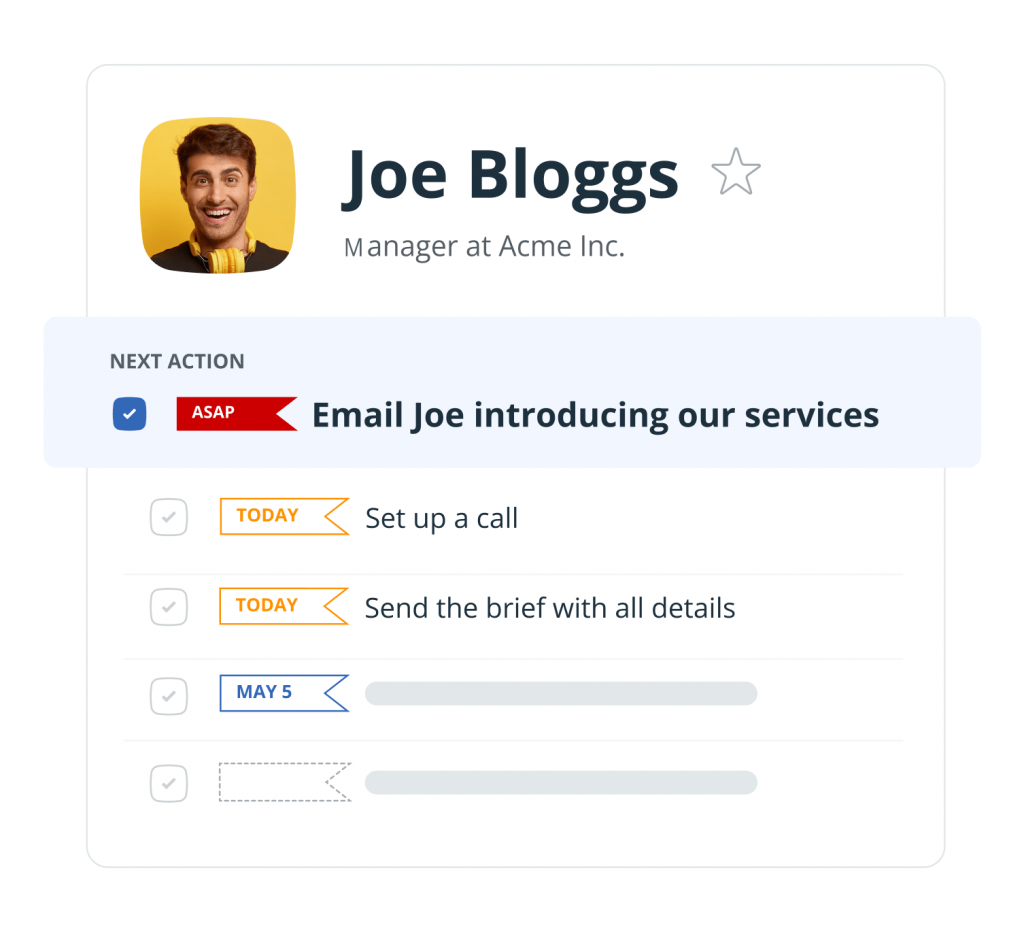
They are tried-and-tested steps.
So after a while, once you notice that some sequence of actions is working, you can organize it in a reusable template and share it with your team.
In a CRM system, this sequence can be then added to all new prospects/leads in just a click.
Create a proactive sales culture
The Next Best Action framework fosters proactivity.
Let’s say you’ve had a promising initial call with a new lead, but they’ve gone quiet for a couple of weeks.
The NBA approach would remind you to reach out and follow up, rather than wait for your prospect’s reply.
This keeps your sales pipeline active and helps you stay in control of your sales process.
Increase Customer Lifetime Value
The NBA framework helps you strengthen and nurture customer relationships.
For example, if you add an NBA in your CRM next to your long-term customers, you won’t forget to reach out to them every now and then and see how they are getting on.
This deepens the relationship and opens up opportunities for cross-selling or upselling, increasing the customer’s lifetime value.
By consistently nurturing these relationships, you can also foster customer loyalty, which is tightly connected to more referrals and positive word-of-mouth.
How Next Best Actions work in sales
The Next Best Actions help salespeople get results in a consistent manner.
But if you’ve never implemented this framework, you might not know where to begin.
So here’s a breakdown of how it works:
Step 1. Map out your sales process
If you have even a few paying customers, you already have a sales process—but it might not be documented yet.
So your first step should be to clearly define your sales process, breaking it down into distinct stages.
These stages usually include initial contact, proposal/demo, negotiation, and closed deal.
Having defined sales stages will help you visualize them on your sales pipeline and identify the NBAs for each of them.
Step 2. Write down Next Best Actions for each stage
For each stage of your sales process, brainstorm a list of potential next actions that could move the deal forward.
These actions could be any sales activity: from sending specific proposals to scheduling demos.
You don’t need to invent steps—you already have them in your process. Just take a bit of time to review what steps you take every time to win a paying customer.
The key is to come up with a comprehensive list of steps (actions) that you can expand on later.
Step 3. Group your Next Best Actions
Once you have a list of potential next actions, it’s time to group them into categories.
For example, your initial outreach could consist of several steps:
- Send an introductory email
- Follow up after the first email
- Set up a video call
- Log call results/meeting notes
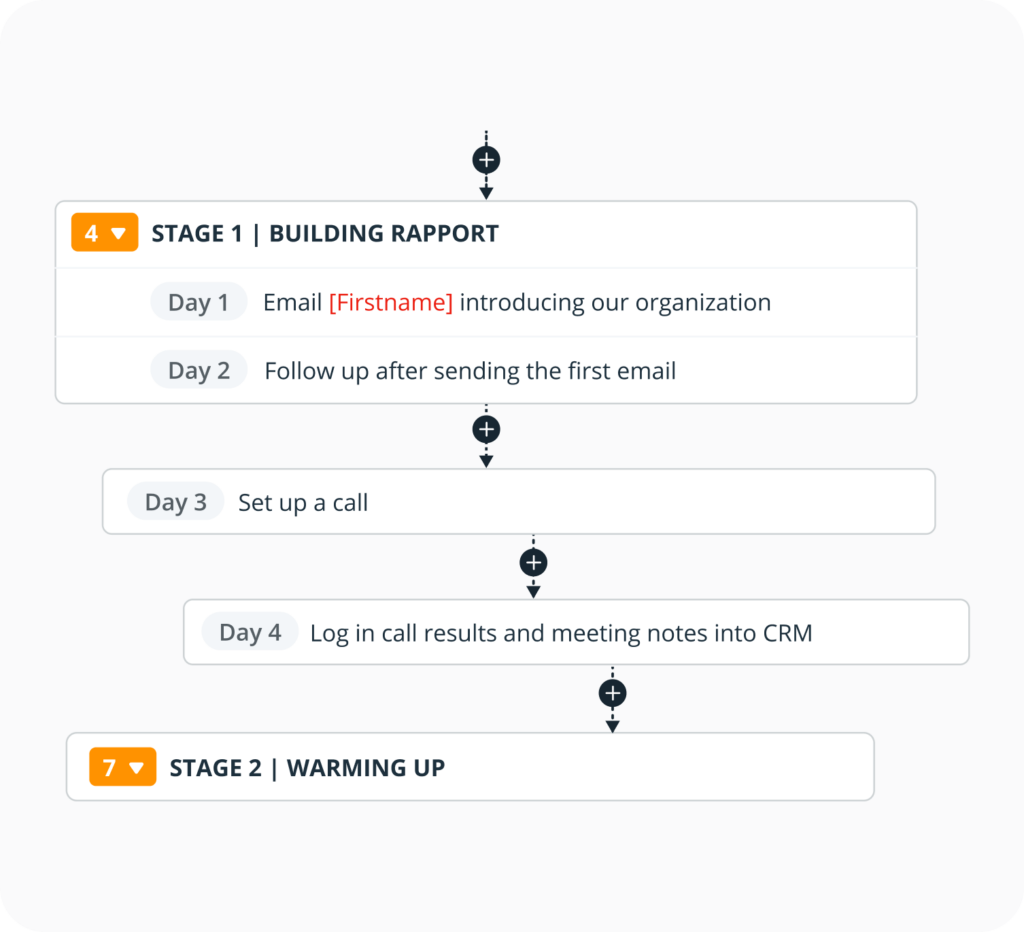
Organize and group your NBAs.
Otherwise, you might end up in sales chaos in a few months or years.
Step 4. Create a template with Next Best Actions
To effectively use the NBA framework in sales, make sure that everyone on your team is on the same page.
Save your NBAs as a reusable template accessible to the whole team.
Step 5. Continuously improve
Nothing stays the same in life. Neither should your NBAs.
Keep an eye on your KPIs and sales performance. This will help you analyze the effectiveness of different NBAs.
Once you do your analysis, refine your list of Next Best Actions, remove ineffective ones, and experiment with different options.
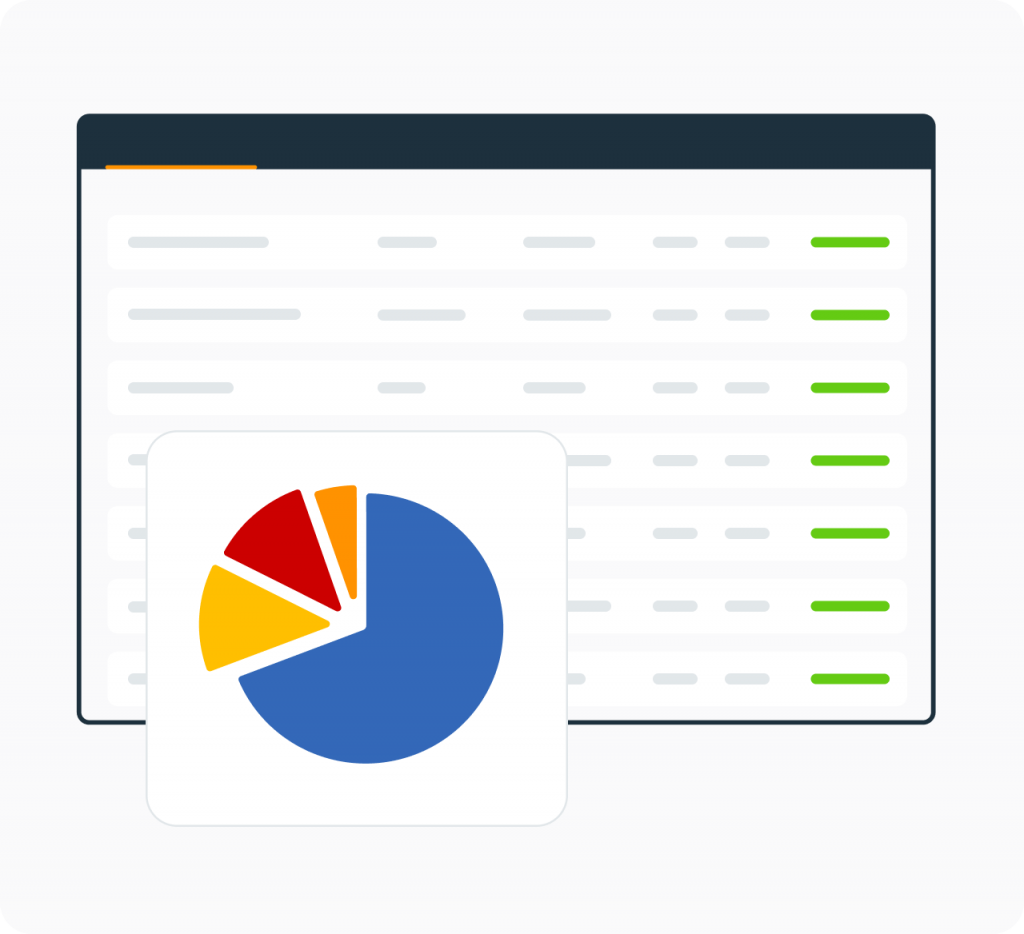
Using Next Best Actions in sales
So here you have it, a simple way to use Next Best Actions in sales.
Contrary to what the majority of articles might tell you, it’s not only useful in marketing, it can be a powerful tool for any business looking for a more proactive approach to sales.
By defining clear steps, continuously refining them, and ensuring your team is aligned, you’re setting up a dynamic and adaptable framework that evolves together with your business needs.






